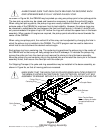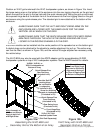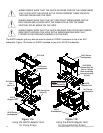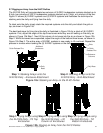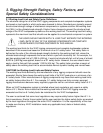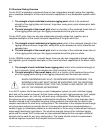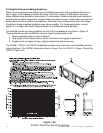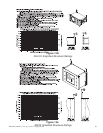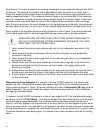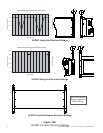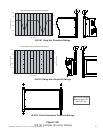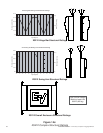
ELECTRO-VOICE
®
X-Line Very Compact
TM
Rigging Manual 36
3.2 Structural Rating Overview
For the XLVC loudspeaker enclosures there are two independent strength ratings that, together,
give a complete description of the overall structural capabilities of any loudspeaker system; which
are:
1. The strength of each individual enclosure rigging point; which is the combined
strength of the rigging tube and channel, hinge bars, swing arms, quick-release pins, bolts
and enclosure.
2. The total strength of the overall grid; which is a function of the combined forces from all
of the rigging points acting on the rigging components and the grid as a whole.
For the XLVC grids, there are also two independent strength ratings that, together, give a
complete description of the overall structural capabilities of the grid; which are:
1. The strength of each individual grid rigging point; which is the combined strength of the
rigging tube and channel, hinge bars, swing arms, quick-release pins, bolts, sidearms and
spreader bars.
2. The total strength of the overall grid; which is a function of the combined forces from all
of the rigging points acting on the rigging components and the grid as a whole.
For the CBEAM coupler beam / extender beam, there are also two independent strength ratings
that, together, give a complete description of the overall structural capabilities of the beam; which
are:
1. The strength of each individual beam rigging point; which is the combined strength of
the U channels, yokes, quick-release pins, bolts and chain-link rings.
2. The total strength of the overall beam; which is a function of the combined forces from
all of the rigging points acting on the rigging components and the beam as a whole.
WHEN SUSPENDING ANY XLVC LOUDSPEAKER ARRAY OVERHEAD, THE
WORKING-LOAD LIMIT MUST NEVER BE EXCEEDED FOR THE INDIVIDUAL
ENCLOSURE RIGGING POINT, FOR THE OVERALL ENCLOSURE, OR FOR
ANY OF THE RIGGING ACCESSORIES.
In an XLVC system, the forces acting on each loudspeaker system (on each individual rigging
point and on the overall enclosure) and the forces acting on each rigging accessory (grid, coupler
beam, extender beam, etc.) will vary with each array configuration. Determining the forces
throughout an array requires complex mathematical calculations. Electro-Voice engineers have,
however, defined a set of simplified structural-rating guidelines that eliminate the need for the
complex calculations for most array configurations. The interaction of the complex forces through-
out arrays were analyzed to develop this set of conservative guide-lines, presented below, to
enable a rigger to immediately determine on site whether or not an array is safe without having to
make weight-distribution calculations. The structural-strength ratings of the individual rigging
points and the overall XLVC enclosures are also presented below so that a complex structural
analysis can be made for any array configuration. The reader should consult an experienced
structural engineer to perform the complex structural analysis.



